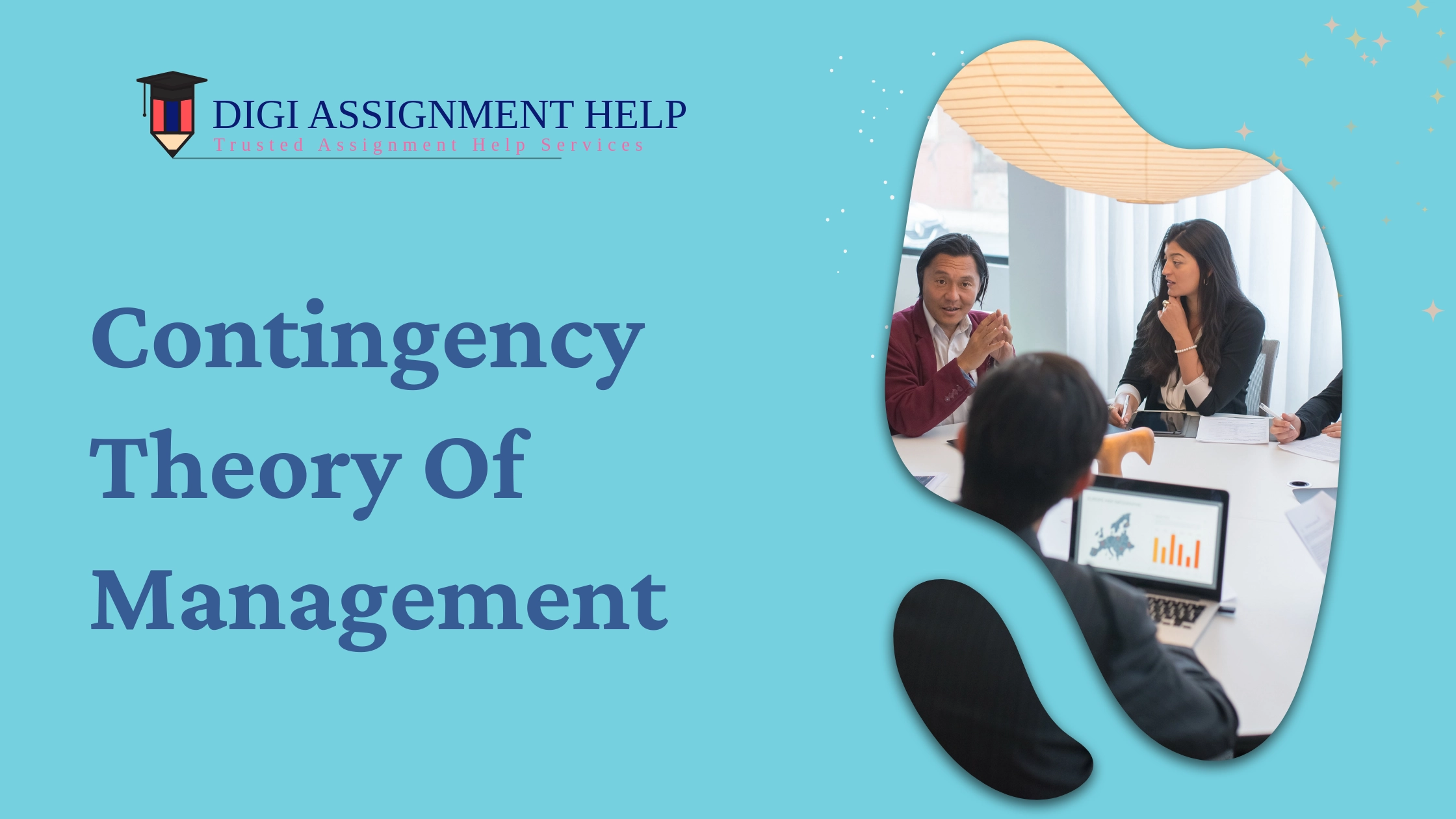What is The Contingency Theory of Management?
 23-Aug-2024 08:04 AM
23-Aug-2024 08:04 AM

Effective leadership is a catalyst for organisational success. Countless theories have been proposed to identify the optimal leadership style, but the contingency theory stands out by emphasising the dynamic nature of leadership.
This approach underscores the importance of adaptability, recognizing that effective leadership hinges on aligning strategies with specific situations.
Whether you're a seasoned manager seeking to elevate your team's performance or a student learning business administration, understanding the contingency theory provides valuable insights.
What is Contingency Theory?
The contingency theory posits that there is no universal, optimal leadership style. Instead, effective leadership hinges on a leader's ability to adapt their approach to fit the specific circumstances at hand.
This managerial perspective recognizes that factors such as the organisation’s size, industry, technology, and economic climate can significantly influence leadership effectiveness. Central to contingency theory is the idea that leaders must be flexible and adaptable.
For instance, a crisis situation might necessitate an authoritative leadership style, while a highly innovative team might thrive under a more participative approach.
Essentially, the contingency theory provides a practical and effective framework for leadership that can drive organisational success.
Core Principles of the Contingency Theory Approach
The contingency approach to management emphasises the dynamic interplay between organisational factors and leadership styles. It rejects the notion of a universal best practice, asserting that effective leadership is contingent upon the specific circumstances of a given situation.
Here are the key characteristics of the contingency approach include:
-
Situational Adaptability: Leaders must be flexible and responsive to changing conditions, adjusting their strategies accordingly.
-
Holistic Perspective: This approach considers the interconnectedness of various organisational elements, such as structure, technology, and human resources, in relation to external factors.
-
Data-Driven Decision Making: Contingency theory encourages a systematic analysis of the situation to identify the most effective course of action.
-
Practical Orientation: By focusing on real-world challenges and providing tailored solutions, this approach offers a pragmatic approach to management.
-
Emphasis on Organisational Fit: The contingency approach highlights the importance of aligning organisational structures and processes with the external environment.
How Does Contingency Theory Help Management?
By understanding the nuances of their environment and the needs of their team, contingency-oriented leaders can make informed decisions about the most appropriate course of action.
The contingency theory offers several advantages for organisations and their leaders:
-
Fosters Adaptability: By emphasising the importance of situational awareness, the contingency theory encourages leaders to be flexible and responsive to changing circumstances. This agility is crucial in today's dynamic business environment.
-
Enhances Performance: Aligning leadership style with situational demands can significantly improve organisational performance. By tailoring their approach, leaders can optimise outcomes and achieve desired results.
-
Promotes Leadership Development: The contingency theory encourages leaders to develop a diverse repertoire of skills and behaviours. This continuous learning and development can lead to greater leadership effectiveness over time.
-
Strengthens Employee Relationships: Understanding that different situations require different leadership styles helps leaders build stronger relationships with employees. By adapting their approach to individual needs and preferences, leaders can create a more positive and productive work environment.
-
Creates a Dynamic Organization: Organisations that embrace the contingency theory are better equipped to respond to challenges and opportunities. A flexible leadership framework can foster innovation, creativity, and overall organisational resilience.
This adaptability fosters a dynamic and responsive leadership style that can enhance employee morale, productivity, and overall organisational performance.
Implementing the Contingency Management Theory in the Organization
The contingency theory emphasises tailoring leadership styles to specific situations. To effectively implement this approach, leaders should focus on understanding their organisational context and the needs of their team.
A key step in applying the contingency theory is to assess your organisational environment using Fiedler's contingency model. This involves evaluating three key factors:
-
Leader-member relations: The degree to which employees trust and respect their leader.
-
Task structure: The clarity and definition of employees' roles and responsibilities.
-
Leader position power: The level of authority and control a leader possesses.
By understanding these variables, leaders can identify the most appropriate leadership style for a given situation. For instance, in a high-pressure environment with unclear tasks, a more directive leadership style might be necessary.
Conversely, in a stable environment with highly skilled employees, a participative approach could be more effective.
Conclusion
Building strong relationships with employees is crucial for successful contingency management. Learning about these theories is key to scoring well in your business education studies and also becoming a seasoned professional one day. The contingency theory of management goes a lot deeper than what can be explored in this short blog format.
So, if you are struggling and need personalised help, feel free to reach out to us at Digi Assignment Help. We can help you develop expertly written assignments on any business administration subject written by expert writers. Check out our website to learn more about our services, or check out our experienced writers.














.webp)
.webp)












 +44 74 8881 8568
+44 74 8881 8568